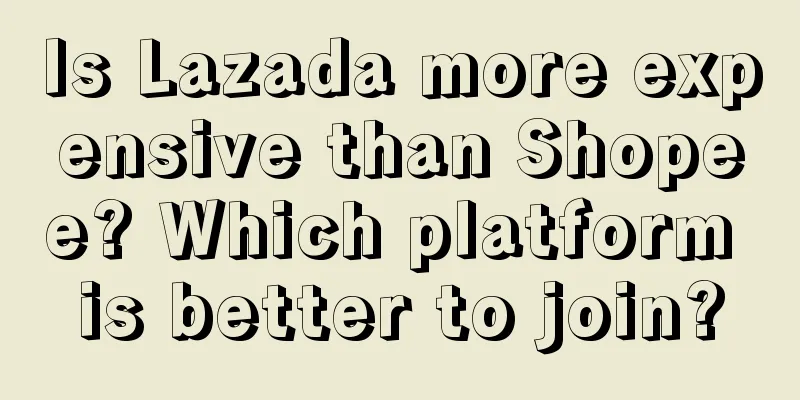The most profitable brand understands your joys and sorrows

If we use one word to describe consumers in 2023, it must be "emotional": sensibility and rationality are intertwined, and anxiety, madness and lying down coexist. New retail business reviews have discussed many times that consumers are becoming more rational, such as not buying unless necessary and looking for substitutes. But looking back at the whole year, consumers seem to be more emotional - from the popular Zibo barbecue and Citywalk, to Dopamine and Maillard outfits, to the old domestic product wave triggered by Li Jiaqi's words angering consumers, and finally to the IP joint name flooding the tea and coffee industry, which started with the joint name of Luckin Coffee and Moutai... These popular events and elements seem to be created by consumers and then fermented through social media. But in fact, various signs show that most of the popular events are not accidental events. Even if they are accidental, they are inseparable from the promotion of brands and merchants in their development process. Brands have always been able to understand consumers' emotions, but this year, marketing that capitalizes on consumers' emotional changes is becoming more and more common. 1. The newness of emotional marketingEmotional marketing is not a new concept in the marketing industry; it can even be considered an old concept. In his book Thinking, Fast and Slow, Nobel Prize winner in Economics Daniel Kahneman divides human thinking into two systems: fast and slow. The former is unconscious and fast, while the latter requires attention and brainpower. His and Tversky's research found that people are not completely rational when making decisions. Instead, they often make irrational and uneconomical decisions. In other words, when people make decisions, fast thinking plays a much greater role than slow thinking. The book also compares the difference in profit growth created by communication activities that take the emotional route and the rational route. The results show that the average growth created by the emotional route is 31%, which is almost double the 16% of the rational route. So, for brands, it is better for consumers to have greater emotional fluctuations - if everyone is calm, cool and rational, then who will continue to consume and buy? In fact, brands and social platforms such as Xiaohongshu and Weibo have long begun to monitor and analyze user emotions. Marco Li, head of LVMH Group's data expert center, stated at the 2023 GDMS Global Digital Marketing Summit (hereinafter referred to as the "GDMS Conference") that brands have always captured and analyzed consumer emotions, but with technological innovations, the response to consumers has become faster. Photo by New Retail Business Review In 2023, ChatGPT will make the concepts of AI technology and big models "enter the homes of ordinary people", and brands will be more keen to use AI technology to analyze consumer data and then generate corresponding content to support marketing. But more often than not, content is actually driven by emotional consumers themselves. Today's young consumers are good at self-expression, want to be happy and want others to recognize their emotions (whether happy or sad), which is the expression of emotions. In terms of guiding consumers' self-communication, many brands have already developed mature methodologies. 2. Marketing is like a bonfireMcDonald's calls its famous "McGate" "campfire marketing". At the GDMS conference, McDonald's China Chief Growth Officer He Yabin shared that the so-called campfire marketing is divided into four steps: "find the dry goods - light a small fire - copy more small fires - keep burning". "Looking for useful information" means looking for small and special content. He said that the Internet is a difference amplifier, so even the most niche content will find an audience. Given that mass media like Douyin are essentially seeking similarities, while social media like Xiaohongshu are seeking differences, small and special content is more likely to gain higher recognition on social media. McDonald's discovered that "McDonalds" believe in a carefree and happy attitude towards life like a child, so it decided to use some service details to arouse consumers' identification with the above attitude towards life - such as launching McDonald's hats so small that only pets and children can wear them; or asking consumers to go to the store on Children's Day and shout "Who is not a baby" so that they can get a free mini ice cream cone. These small but special products, events and experiences can quickly ignite consumers' emotions, allowing them to naturally think "Isn't this what I want/Isn't this what I am talking about?", thus more actively participating in related marketing events and spontaneously creating their own unique content. This kind of enthusiasm is obviously far better than some businesses using free snacks and desserts as bait to euphemistically "force" consumers to write five-star reviews of more than 100 words. This is the equation for constantly replicating many small fires: "Dissemination is social learning plus replication," said He Yabin. Such replication eventually formed the community culture of "Maimen". He Yabin also summarized the three core elements of community culture: language, tokens and behavior. Let’s take “Maimen” as an example. It may seem that the introduction is incoherent, but in essence, “Maimen Literature”, which reflects the innocent words of children, is the language of community culture; McDonald’s receipts and peripheral products with M elements have become tokens that allow consumers to recognize “like-minded people” at a glance; finally, people post receipts and original “Maimen Literature” on social media. Photo by New Retail Business Review In addition, He Yabin also said that companies need to break the threshold of circles by understanding consumers' consumption thresholds . Only in this way can the bonfire continue to burn. He used Pinduoduo as an example. Pinduoduo originally used the "cut-down" method to achieve viral spread on WeChat, but there are always some people who are unwilling to bother their relatives and friends for this, or feel that the products sold by Pinduoduo do not match their lifestyle. How to impress this group of people? The only way is to use real low prices - Apple mobile phones and infant formula milk powder that are 4,000 to 5,000 yuan cheaper than the official price, so that they will "really like it". Luckin Coffee is another typical example. White-collar workers in Beijing, Shanghai, Guangzhou and Shenzhen who work in the CBD originally looked down on Luckin Coffee, which costs 9.9 yuan per cup, and thought it was far inferior to Starbucks in terms of style. However, the joint venture between Luckin Coffee and Moutai broke this "chain of contempt" in one fell swoop, enhanced their sense of value, and allowed every white-collar worker to join the carnival, and no longer felt that they had lost face. Previously, New Retail Business Review also found that more and more brands’ marketing has become down-to-earth (see “Lululemon, L’Oreal, and Adidas have all set up stalls, are big brands’ marketing collectively in a mess?”). Organizing square dance competitions, setting up stalls for marketing, and giving away radishes, cabbages, and frisbees can actually be considered to break the threshold of consumers, while hoping to trigger the spread of information on social media. 3. Brands control your happiness, anger, sorrow and joySince the second half of 2023, tea, coffee, and catering brands have frequently engaged in IP co-branding. New Retail Business Review believes that the essence of this is to stimulate interest consumption and let consumers who are interested in IP spontaneously promote brands and products. This is also a type of emotional consumption. This kind of marketing method is so good at "harvesting" consumers' emotions that even Starbucks has to lower its profile and join in if it can't beat them. Image source network The most classic case of emotional marketing last year was when Li Jiaqi angrily criticized consumers for defending the price of Huaxizi's eyebrow pencil at 79 yuan, which aroused consumers' anger and had a huge impact on him and the Huaxizi brand. Many classic domestic brands, such as Fenghua, Hongxing Erke, Tianfu Cola, and Yumeijing, took the opportunity to put together a series of "79 yuan packages" in the live broadcast room to show their presence. This is essentially a grasp of consumers' anger. Consumers’ emotions have actually always been controlled by businesses. He Yabin mentioned in his sharing that pet lovers and mothers and babies are both highly emotional groups, and if a brand can mobilize their emotions, it will achieve the effect of "a stone stirring up a thousand waves." However, brands must also be cautious in facing consumer emotions. He Yabin said: "We need to be vigilant at this time - brands are not the creators of community culture. The responsibility of brands is to unite people with common values. " McDonald's is well aware that when consumers pay tribute to "McMen", they are actually paying tribute to its own values, and what McDonald's needs to do is to continuously output content that is consistent with consumers' values. MINISO, which has already fully utilized IP, also has its own experience on the importance of content. Its chief marketing officer Liu Xiaobin said at the GDMS conference that MINISO should transform from a retail company to a content company, using high-quality and detailed content to mobilize consumer emotions. The "Dunmen" of MINISO, photo by New Retail Business Review At the same time, Liu Xiaobin also said that when MINISO distributes content, it is mainly responsible for grasping the central idea of the content, and it must pay attention to decentralization when distributing it. Brands need to control the "degree" of content and communication methods, which is very important in emotional marketing. The more and more complex consumer emotions are, the more "manipulation space" there will be for brands. But at the same time, emotions are not simple labels. Consumers' emotional expressions may only be the tip of the iceberg of their psychological activities. Therefore, there is no standard answer that one emotion corresponds to one method. The most important thing is not to educate consumers. Thinking from the perspective of consumers is a policy that many big brands, including Procter & Gamble, are now actively implementing. For example, young people often make fun of themselves on social media for being "sad" and wanting to lie down, but most of the time, this self-mockery is actually positive: they want to find a clearer sense of self-worth, and want to gain the motivation to move forward, upward, or maintain themselves in the face of adversity. At this time, the best choice for brands is to acknowledge the "sad" emotion and then provide gentle emotional support. Of course, today's consumers are not "all emotional". In fact, they have become very rational. After years of market education and the influence of the consumer environment, consumers can more quickly and keenly perceive the brand's "manipulation" of themselves in marketing, and then quickly "follow". Brand owners must also find ways to embed the brand into consumers' minds as unnoticeably as possible, and bring consumers back to the emotional and brain-heated state over and over again. The game between brands and consumers is an eternal proposition. Author: Qian Luoying, Editor: Ge Weiwei Source: WeChat official account: New Retail Business Review (ID: xinlingshou1001) |
<<: ChatGPT and visual search are changing the search market landscape
>>: Why are mass-market snack shops so popular?
Recommend
eBay US adds video functionality to stores and listings
eBay US recently announced that it will launch new...
It’s time for e-commerce pre-sales to “die”
From initially alleviating inventory pressure and ...
What do RMB settlement and foreign currency settlement mean? What are the differences?
In today's globalized economy, the status of c...
New rules for Douyin e-commerce are here! A large number of merchants have been closed down and deducted money. What should they do?
I believe that everyone often shops on e-commerce ...
New strategy for high customer orders in 2024: Red Book content seeding, private domain service closing
In the new era of digital marketing, how can we ef...
Douyin is creating an online supermarket, aiming to enter the comprehensive e-commerce industry?
Friends who often follow Douyin should know that D...
Is there any promotion on Amazon Black Friday? How to get more traffic on Amazon Black Friday?
After Double Eleven, Black Friday is coming soon. ...
How does Amazon rank? How to check the ranking?
Amazon is a world-renowned platform with many sell...
Is Focus Media old? | 5000 words to reread the value of elevator media
Is Focus Media old? The author analyzes the curren...
High temperatures "heat up" young people's consumption
This article mainly discusses the phenomenon that ...
How much do new Amazon sellers earn? How does Amazon make money from sellers?
For new Amazon sellers, they are often confused ab...
The "solution" you choose determines how expensive your product can be sold!
This article raises a question: There are countles...
Some traffic operation insider information you must know
Nowadays, the traffic distribution mechanism has c...
How to publish products on Wish? What products are easy to sell?
As a world-renowned e-commerce platform, Wish'...
Can Shopify upload Amazon products? How to do it?
Some merchants who open stores on Shopify have alr...









